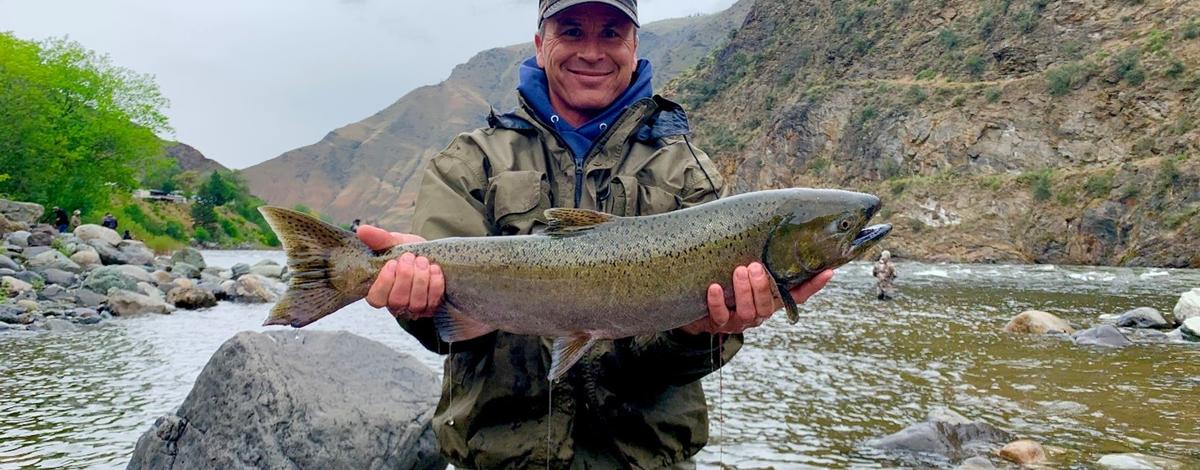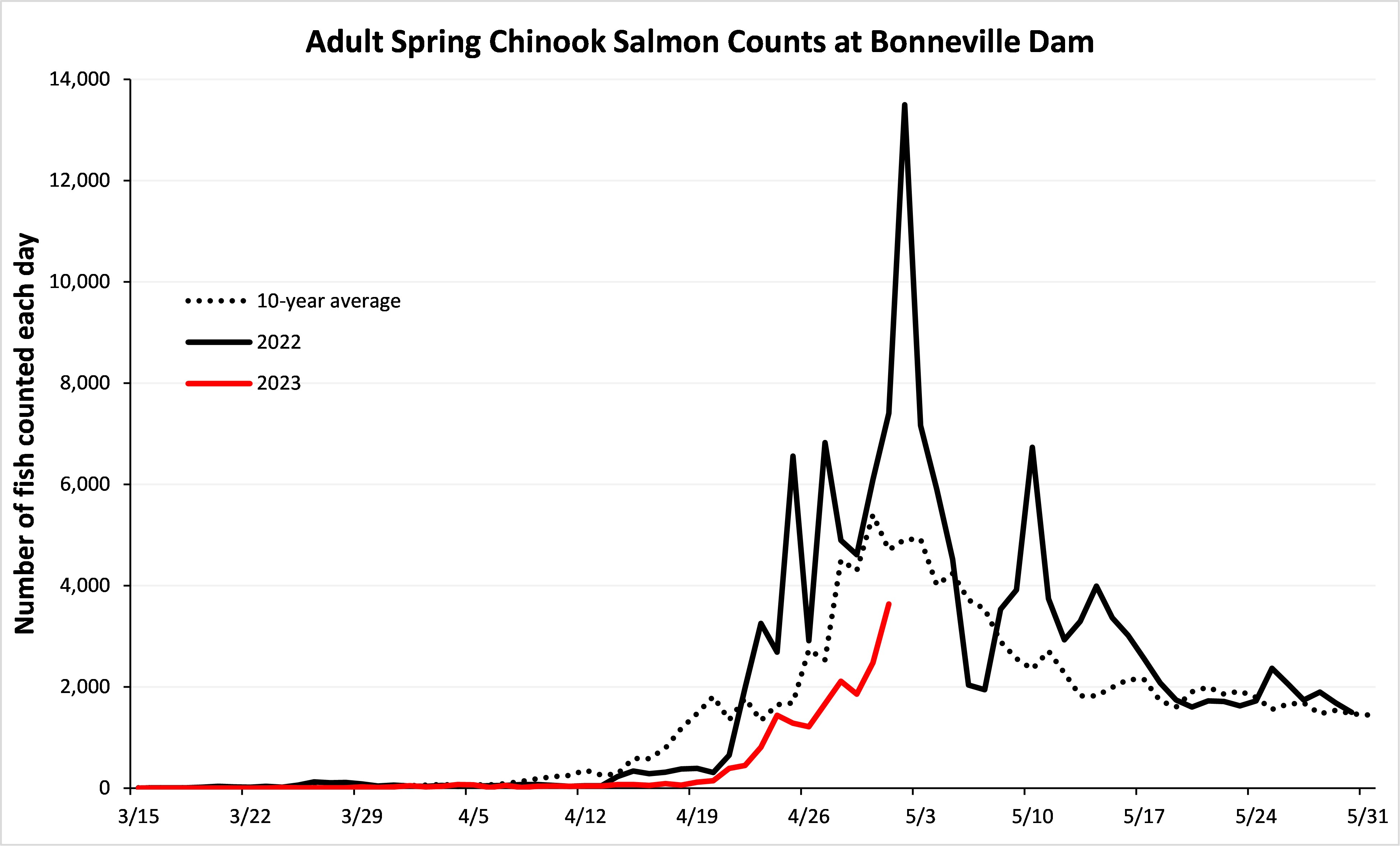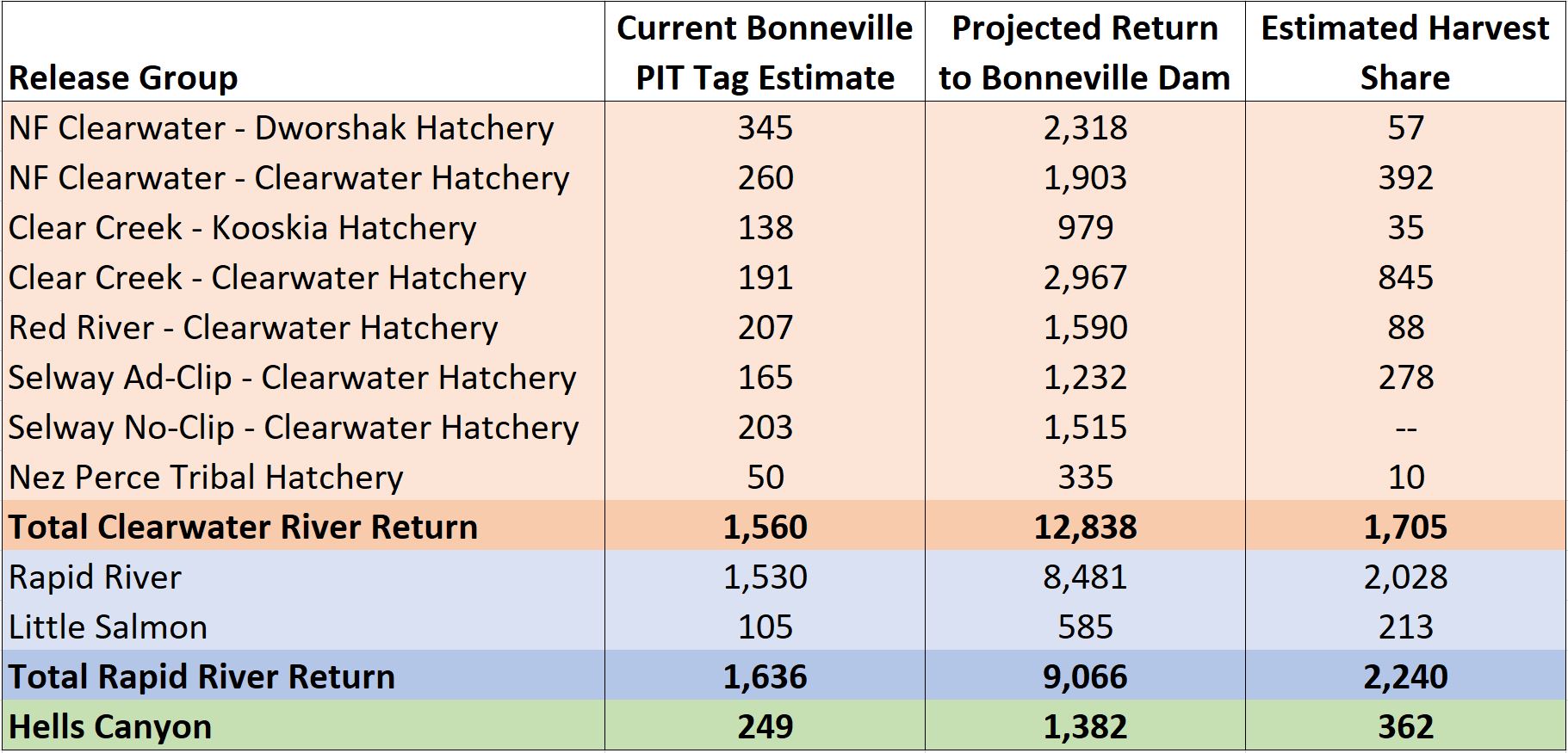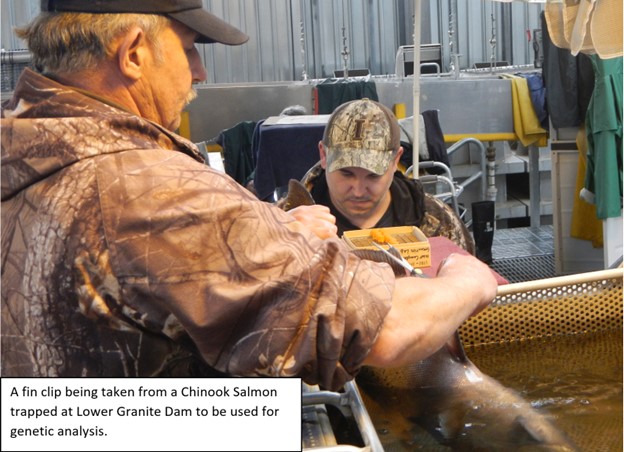Hi everybody.
It is time for my weekly spring Chinook Salmon update (May 2, 2023). So, let’s get right to it and discuss what we have learned since my last update.
Run Update
Since my last update, Chinook Salmon counts at Bonneville Dam have picked up. I have updated the figure below so it now shows daily dam counts of adult spring Chinook Salmon up through May 2 (red line) in comparison to last year’s return (solid black line) and the 10-year average (dotted black line). As you can see, the fish this year are arriving later than last year and in comparison to the 10-year average. If you compare the Bonneville Dam adult Chinook Salmon counts since 1939 for this time of year (March 15 through May 1), this year ranks as the 16th lowest (out of 85 years). This tells us the run is either late, small, or both. The concern is, the later the return becomes, the more likely the run is going to be small. For example, returns during 2017, 2018, and 2019 all had late returns, and for all three years, fewer fish returned than we have forecasted for this year. One thing we can do to give us more information on whether the run is small or not is to look at catch rates in the test fishery in the lower Columbia. This data shows catch rates are lower this year than last year and more consistent with low run years. What we need to see at this point is for the daily counts at Bonneville to surpass 4,000 fish and stay above that for at least a week, otherwise the run will likely come in under the forecast.




